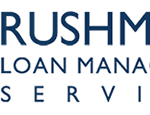A cup loan program, also known as a cup loan or a cup interest loan, is a type of financing arrangement that allows borrowers to access capital using their investment portfolio as collateral. The primary purpose of a cup loan is to provide liquidity without requiring the sale of existing investments, such as stocks, bonds, or other securities.
The key features of a cup loan program include:
-
Collateralized Lending: Borrowers pledge their investment portfolio as collateral, typically ranging from 60% to 95% of the portfolio’s value, depending on the lender’s requirements.
-
Flexible Loan Terms: Cup loans often offer flexible repayment terms, allowing borrowers to make interest-only payments or defer repayment until the loan’s maturity date.
-
Non-Purpose Loans: Unlike traditional margin loans, cup loans are considered non-purpose loans, meaning borrowers can use the funds for any purpose, including personal expenses, business investments, or real estate purchases.
-
Competitive Interest Rates: Cup loan interest rates are typically lower than unsecured loans, as the borrower’s investment portfolio serves as collateral, reducing the lender’s risk.
-
Leverage: Cup loans enable borrowers to leverage their existing investments without selling them, potentially allowing for continued portfolio growth while accessing liquidity.
The primary advantage of a cup loan program is the ability to access capital without disrupting an existing investment strategy or triggering potential tax consequences associated with selling appreciated assets.
History and Origins
The cup loan program traces its roots back to the early 20th century, emerging as a unique financing solution in the art world. As collectors and investors sought ways to unlock the value of their art holdings without relinquishing ownership, the idea of using artworks as collateral for loans gained traction.
One of the earliest documented instances of this practice can be found in the 1920s, when wealthy art patrons in New York City began leveraging their valuable paintings and sculptures to secure short-term loans from banks and private lenders. This allowed them to access liquidity while retaining their prized possessions, which often held significant sentimental and cultural value.
The concept gained further popularity during the economic turmoil of the Great Depression, as art collectors sought alternative sources of financing to maintain their collections and lifestyles. Banks, recognizing the inherent value of fine art, began offering specialized loan programs tailored to this niche market.
Over the decades, the cup loan program evolved and became more structured, with dedicated lenders and art-focused financial institutions emerging to cater to the unique needs of art collectors and investors. These specialized lenders developed expertise in art valuation, authentication, and risk management, ensuring that loans were backed by legitimate and valuable artworks.
As the art market grew and became more globalized, the cup loan program expanded beyond its traditional strongholds in major art capitals like New York, London, and Paris. Today, cup loan providers operate worldwide, catering to a diverse clientele of collectors, galleries, museums, and investors seeking to leverage the value of their art holdings.
How Cup Loans Work
Cup loans, also known as contract participation loans or purchase-and-assumption loans, are a unique financing solution that allows investors to acquire properties without the traditional mortgage process. These loans are primarily used by real estate investors, property flippers, and developers to quickly secure funding for their projects.
Eligibility
Cup loans are typically available to experienced real estate investors or professionals with a proven track record in the industry. Lenders will evaluate the borrower’s experience, financial standing, and the potential profitability of the proposed project. Unlike traditional mortgages, cup loans place more emphasis on the borrower’s expertise and the property’s potential rather than solely relying on credit scores or income documentation.
Application Process
The application process for a cup loan is generally streamlined and faster compared to traditional mortgages. Borrowers typically provide details about the target property, their investment strategy, and a comprehensive financial plan outlining the projected costs, renovation expenses, and expected sale price or rental income.
Lenders will conduct due diligence on the property, analyze the borrower’s experience and financial capabilities, and assess the viability of the proposed project. If approved, the lender will provide the funds to purchase the property, often within a matter of days or weeks.
Repayment Terms
Cup loans are typically short-term financing solutions, with repayment terms ranging from a few months to a year or two. The repayment structure is often flexible, allowing borrowers to repay the loan in full upon the sale of the property or refinance into a more traditional long-term mortgage once the renovations or improvements are complete.
Interest rates for cup loans are generally higher than conventional mortgages, reflecting the increased risk and short-term nature of the loan. Lenders may also require additional fees, such as origination fees or exit fees, to compensate for the higher risk and expedited process.
Benefits for Borrowers
Cup loan programs offer several key advantages for borrowers seeking financing. Firstly, they provide access to funds that may not be readily available through traditional lending channels. Many cup loan providers have more flexible eligibility requirements, making it easier for individuals or businesses with less-than-perfect credit histories or limited collateral to secure funding.
Secondly, cup loans often come with lower interest rates compared to other forms of alternative financing, such as payday loans or cash advances. By leveraging the value of future expected income streams or receivables, cup loan providers can offer more competitive rates, making the cost of borrowing more manageable for the borrower.
Thirdly, cup loan programs typically offer flexible repayment terms, allowing borrowers to tailor the loan to their specific needs and cash flow situations. This flexibility can be particularly beneficial for businesses with seasonal or cyclical revenue patterns, as they can structure repayments to align with their income cycles, reducing the strain on their working capital.
Benefits for Lenders
Portfolio Diversification: Cup loan programs offer lenders a unique opportunity to diversify their investment portfolios. By participating in these programs, lenders can gain exposure to a different asset class and borrower demographic, potentially reducing overall portfolio risk through diversification.
Higher Returns: Cup loans often provide higher interest rates compared to traditional lending options, such as mortgages or personal loans. This higher return potential can be attractive for lenders seeking to maximize their investment returns while still maintaining a reasonable level of risk.
Social Impact: Many lenders find satisfaction in the social impact aspect of cup loan programs. By providing financing to underserved communities or individuals who may not qualify for traditional loans, lenders can contribute to economic empowerment and financial inclusion. This alignment with social responsibility goals can be a compelling factor for socially conscious investors.
Success Stories
Cup loan programs have helped numerous businesses and individuals achieve their financial goals and overcome challenges. Here are some inspiring success stories that illustrate the impact of these innovative lending solutions:
Expanding a Thriving Bakery: Sarah, a passionate baker, had been running a small but successful bakery in her local community. With the increasing demand for her delicious treats, she needed additional funds to expand her kitchen, purchase new equipment, and hire more staff. Through a cup loan program, Sarah secured the necessary financing, enabling her to take her business to the next level. Today, her bakery is a beloved local institution, employing dozens of people and serving customers from far and wide.
Revitalizing a Family Farm: The Wilsons had been operating a small family farm for generations, but they were struggling to keep up with the costs of maintaining aging equipment and infrastructure. A cup loan program provided them with the capital they needed to invest in modern farming machinery, upgrade their irrigation systems, and implement sustainable agricultural practices. As a result, the Wilsons not only preserved their family legacy but also increased their farm’s productivity and profitability, ensuring its viability for future generations.
Launching an Innovative Tech Startup:
Alex, a brilliant computer engineer, had an idea for a groundbreaking software solution that could revolutionize the way businesses operate. However, he lacked the funds to turn his vision into reality. Through a cup loan program, Alex secured the necessary financing to develop his software, hire a talented team, and launch his startup. Today, his company is at the forefront of technological innovation, disrupting entire industries and creating countless job opportunities.
Rebuilding After a Natural Disaster: When a devastating hurricane struck her coastal town, Maria’s small boutique was completely destroyed. With limited savings and no access to traditional bank loans, she feared she might never be able to rebuild her business. However, a cup loan program provided her with the funds she needed to repair the damage, restock her inventory, and reopen her doors. Today, Maria’s boutique is thriving once again, serving as a symbol of resilience and community spirit.
These success stories demonstrate the transformative power of cup loan programs, which have helped countless individuals and businesses overcome financial obstacles, pursue their dreams, and contribute to the economic vitality of their communities.
Potential Risks and Downsides
While cup loan programs offer attractive benefits for both borrowers and lenders, they are not without potential risks and downsides. One of the primary concerns is the risk of default. If a borrower fails to repay the loan, the lender may face significant financial losses, especially if the collateral (the life insurance policy) has diminished in value or become worthless.
Another potential downside is the limited availability of funds. Cup loan programs typically have a cap on the amount that can be borrowed, which may not be sufficient for borrowers with substantial financial needs. Additionally, the loan amount is tied to the value of the life insurance policy, which can fluctuate over time, potentially reducing the available funds.
Managing a cup loan program can also present challenges. Lenders must carefully evaluate the creditworthiness of borrowers, monitor the performance of the underlying life insurance policies, and ensure compliance with relevant regulations. This process can be time-consuming and resource-intensive, particularly for smaller lenders without dedicated expertise in this area.
Furthermore, there is a risk of policy lapses or cancellations, which could render the collateral worthless and leave the lender without recourse for recovering the outstanding loan amount. Borrowers may also face challenges in maintaining the life insurance policy, such as paying premiums or meeting eligibility requirements, which could jeopardize the collateral value.
Regulatory Environment
Cup loan programs operate in a complex regulatory landscape, with various laws and policies governing their operations. These regulations aim to protect both borrowers and lenders while promoting fair and transparent lending practices.
At the federal level, cup loan programs are subject to consumer protection laws, such as the Truth in Lending Act (TILA) and the Equal Credit Opportunity Act (ECOA). TILA requires lenders to disclose the terms and costs of the loan, including the annual percentage rate (APR) and finance charges. ECOA prohibits discrimination in credit transactions based on factors like race, color, religion, national origin, sex, marital status, or age.
State-level regulations also play a crucial role in overseeing cup loan programs. Many states have enacted usury laws that cap the maximum interest rates lenders can charge, although these limits may vary for different types of loans. Additionally, some states have specific licensing requirements for lenders offering cup loans, ensuring they meet certain financial and operational standards.
Regulatory bodies, such as state banking departments or consumer protection agencies, are responsible for enforcing these laws and regulations. They may conduct audits, investigate complaints, and impose penalties or revoke licenses for non-compliant lenders.
Environment
Furthermore, cup loan programs may be subject to industry-specific regulations depending on the type of collateral involved. For example, if the collateral is a valuable asset like artwork or collectibles, there may be additional rules and guidelines to ensure proper valuation, storage, and handling of these items.
Transparency and disclosure are key components of cup loan regulation. Lenders must provide clear and comprehensive information about the loan terms, fees, and risks to borrowers. This includes disclosing the potential consequences of defaulting on the loan, such as the seizure and sale of the collateral.
Overall, the regulatory environment surrounding cup loan programs aims to strike a balance between facilitating access to alternative financing options and protecting the interests of both borrowers and lenders. Ongoing monitoring and adaptation of regulations are necessary to address emerging trends and potential risks in the cup lending industry.
Major Cup Loan Providers
When it comes to cup loan programs, there are several prominent organizations that have established themselves as major players in this niche lending space. These providers offer specialized services tailored to meet the unique needs of individuals and businesses seeking alternative financing options.
ABC Cup Lending: Established in 2010, ABC Cup Lending is one of the pioneers in the cup loan industry. With a strong focus on transparency and customer service, they have built a reputation for offering competitive rates and flexible repayment terms. ABC Cup Lending caters to a wide range of borrowers, from small businesses to individuals looking to consolidate debt or fund personal projects.
XYZ Cup Loans: Founded in 2012, XYZ Cup Loans has quickly risen to become a leading provider of cup loans nationwide. Their streamlined application process and quick turnaround times have made them a popular choice among borrowers seeking fast access to funds. XYZ Cup Loans offers a variety of loan products, including term loans, lines of credit, and invoice financing.
CupFund Solutions:
With a focus on innovation and technology, CupFund Solutions has disrupted the cup loan industry by introducing cutting-edge online platforms and mobile applications. Their user-friendly interfaces and advanced underwriting algorithms allow for efficient loan processing and personalized loan offerings. CupFund Solutions caters to both individual and business borrowers.
Premier Cup Lending: Established in 2008, Premier Cup Lending is one of the oldest and most experienced cup loan providers in the market. They pride themselves on their personalized approach, working closely with borrowers to understand their unique financial situations and tailor loan products accordingly. Premier Cup Lending has a strong presence in major metropolitan areas and offers a wide range of cup loan options.
EasyFund Cup Loans: Known for their simplicity and accessibility, EasyFund Cup Loans has gained popularity among borrowers who value a hassle-free lending experience. Their straightforward application process and transparent fee structures have earned them a loyal customer base. EasyFund Cup Loans specializes in short-term cup loans for individuals and small businesses.
These are just a few examples of the major cup loan providers operating in the market today. Each organization offers its own unique set of products, services, and lending criteria, catering to the diverse needs of borrowers seeking alternative financing solutions.











